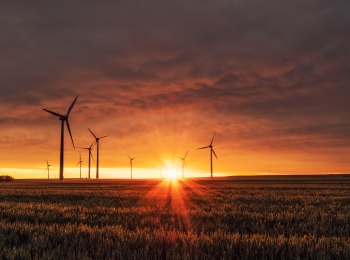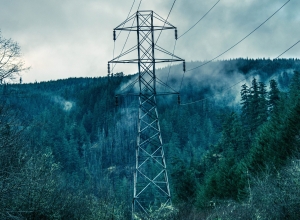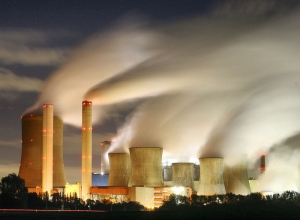An online tool to calculate the levelized cost of solar photovoltaics and wind supported by energy storage technologies to supply firm electricity
Introduction
Renewable energy (RE) technologies, in particular, solar photovoltaics (PV) and wind are currently the most deployed electricity resources, which are transforming the global energy system [1]. In 2018, RE technologies represented 84% of all the new electricity capacity added worldwide and already accounted for one third of the global power capacity by the end of 2018 [2]. Countries around the world are taking steps to revisit their energy sector strategy and embrace RE as part of their energy supply mix [1]. Triggered by the Fukushima disaster, Switzerland also decided to gradually phase out nuclear energy and replace the majority of it by RE, in particular by rooftop PV and wind energy [4].
However, wind and PV generation are stochastic, since their outputs are intermittent and cannot be fully predicted in advance [4]. This intrinsic characteristic prevents them from supplying large fractions of electricity on demand and is one of the barriers to more significant deployments. Thus, understanding the intermittent patterns of PV and wind as well as finding solutions to increase their dispatchability is central to the attractiveness of RE technologies, the stability of the power network and for achievement of the decarbonization targets [5].
In order to tackle the issues related to RE intermittency, several options are under discussion by relevant stakeholders around the world. Some of them include: flexible generation, demand-side management, interconnection, grid reinforcement, curtailment and energy storage [6]. Energy storage (ES) technologies (such as batteries, compressed air energy storage, pumped hydro storage etc.) can be integrated with intermittent solar and wind power to form flexible hybrid systems and their application is gradually becoming more and more important [7, 8]. ES can help RE technologies to supply electricity on demand and become dispatchable [9]. However, selecting an optimal ES technology to match RE generation is challenging due to the varying generation profiles of PV and wind power technologies as well as the wide portfolio of existing ES technologies with different techno-economic characteristics such as depth of discharge, roundtrip efficiency, capital expenditure (CAPEX), operation and maintenance expenditure (OPEX) etc. [8]. In order to overcome this challenge, we developed a model to simulate the performance of different hybrid systems (incorporating RE and ES technologies) to provide firm electricity supply under various supply mode1 strategies such as peak demand and baseload at different geographical scales2. Later, we use the performance indicators of the hybrid systems along with the various technological characteristics and cost parameters of RE and ES technologies to calculate the levelized cost of hybrid system (LCOHS). This helps us to determine the most optimal combination of RE and ES technologies to supply different type of demand profiles at various scales.
LCOHS concept (Rationale)
The levelized cost of energy is the most widely used techno-economic indicator to compare the cost-competitiveness of RE and ES technologies. In our study, we extend its definition to hybrid systems (LCOHS) incorporating both RE and ES technologies, defined by Equation 1. This extension allows us to compare hybrid systems among themselves and with the conventional generators (such as nuclear, hydro, gas etc.), depending on the type of supply mode and the scale. Equation 1 accounts for the CAPEX and OPEX of both the RE and ES technologies (CAPEXRE, CAPEXES, OPEXRE and OPEXES), as well as the annual electricity supply directly from the RE system (PRE,direct) and the annual electricity discharged from the ES system (PES,discharge). Finally, r represents the discount rate, n corresponds to the calculation period for the LCOHS, l represents the lifetime of a technology (e.g., ES technology, inverter or wind turbine), rl represents the remaining lifetime of a technology beyond the calculation period and δ represents the degradation rate of the PV panels or wind turbines respectively. In case the lifetime of a technology (e.g. inverter, ES system or wind turbine) is shorter than the calculation period of a RE hybrid system, further reinvestments are considered, in addition to the initial CAPEX. In case the lifetime of a technology is longer than the calculation period of a RE hybrid system, the discounted remaining value of the technology (beyond the calculation period of a RE hybrid system) is deducted from the total CAPEX of the technology.
Equation 1:
LCOHS calculator approach and key features
A link to the online LCOHS calculator is given here (http://lcohs.unige.ch:5000). The user can examine a range of ES technologies to support RE technologies for any type of supply mode strategy and various scale of deployment, namely, residential, utility and bulk, for any canton in Switzerland by choosing from the various options available in the drop down menu. After selecting the above, the user can use a slider to control or manually enter input values for various parameters of RE and ES technologies. However, some parameters such as depth of discharge and round trip efficiency of the energy storage technologies are fixed (and cannot be changed by the user), considering the current state of the art of the technologies. After entering the input data, the user can visualize the value of levelized cost of the selected hybrid system in EUR/kWh on the bottom left of the web page, which is automatically calculated after entering the input parameters. In order to enable the user to go into the nitty-gritty of the terms used and understand the rationale behind the calculator, we have developed a detailed documentation page, which can either be accessed from the top right or bottom of the main web page. In addition, we have also provided the typical techno-economic specifications for PV, wind and various energy storage technologies considering their current state of art in Switzerland. These values can serve as a reference for the users and can be accessed via the tab titled ‘Technologies Specifications’ located on the upper right corner of the web page.
Figure 1 shows a snapshot of the main web page containing the calculator. Key features of this calculator are: 1) it is very easy to use and comprehend; 2) it can be used to calculate LCOHS for number of combinations of hybrid systems across different cantons in Switzerland; 3) the transparency on the input data used and flexibility to choose different RE sources, ES technologies as well as different supply mode strategies and scales, across Switzerland. This calculator aims to serve as a guide for researchers, technology developers, investors and policymakers aiming to promote the transition to a sustainable energy future using firm renewable electricity.
Figure 1: Snapshot of LCOHS calculator interface showcasing the various techno-economic parameters that can be set by the user to calculate the levelized cost of the selected hybrid system.
Endnotes
1 Supply mode is defined by a set of hours in a day during which the RE hybrid system is supplying firm electricity. Different types of supply modes are discussed in detail in the documentation page of the calculator.
2 Scale represents the geographical area/extent to be served i.e. residential, utility or bulk. The scale defines the nominal power rating of both renewable and energy storage technologies, as schematically depicted in the documentation page, Figure 3.
Recent publication
"Levelized cost of solar photovoltaics and wind supported by storage technologies to supply firm electricity", Journal of Energy Storage (2019) (http://doi.org/10.1016/j.est.2019.101027).
References
[1] IRENA (2017). REthinking Energy 2017: Accelerating the global energy transformation. International Renewable Energy Agency, Abu Dhabi; 2017. ISBN 978-92-95111-06-6 (PDF). Available from: www.irena.org/publications/2017/Jan/REthinking-Energy-2017-Accelerating-the-global-energy-transformation.
[2] IRENA (2019).Renewable capacity statistics 2019. International Renewable Energy Agency, Abu Dhabi; 2018. ISBN 978-92-9260-123-2 (PDF). Available from: www.irena.org/publications/2019/Mar/Renewable-Capacity-Statistics-2019.
[3] Swiss Federal Office of Energy [Online]. Energy strategy 2050 once the new energy act is in force. Bundesamt für Energie. (Accessed on 08/01/2018). Available from: www.bfe.admin.ch/bfe/en/home/policy/energy-strategy-2050.html.
[4] Prasad AA, Taylor RA, Kay M. "Assessment of solar and wind resource synergy in Australia". Applied Energy. 2017;190:354–367. Available from: http://dx.doi.org/10.1016/j.apenergy.2016.12.135.
[5] Mahmud N, Zahedi A. "Review of control strategies for voltage regulation of the smart distribution network with high penetration of renewable distributed generation". Renewable and Sustainable Energy Reviews. 2016;64:582–595. Available from: http://dx.doi.org/10.1016/j.rser.2016.06.030.
[6] Mendoza DP. Optimum community energy storage for end user applications. 2014; Doctorate. Available from: http://eprints.nottingham.ac.uk/id/eprint/27708.
[7] Shaner MR, Davis SJ, Lewis NS, Caldeira K. "Geophysical constraints on the reliability of solar and wind power in the United States". Energy & Environmental Science. 2018. Available from: http://xlink.rsc.org/?DOI=C7EE03029K.
[8] Braff WA, Mueller JM, Trancik JE. "Value of storage technologies for wind and solar energy". Nature Climate Change. 2016;6(10):964–969. Available from: www.nature.com/doifinder/10.1038/nclimate3045.
[9] Sepulveda NA, Jenkins JD, de Sisternes FJ, Lester RK. "The Role of Firm Low-Carbon Electricity Resources in Deep Decarbonization of Power Generation". Joule. 2018 nov;2(11):2403–2420. Available from: www.sciencedirect.com/science/article/pii/S2542435118303866.
Ruchi Gupta
Ruchi Gupta is a PhD student at the Institute for Environmental Sciences, University of Geneva, working on renewable energy and storage within the Swiss Competence Centre for Heat and Electricity Storage (SCCER-HaE). She is contributing to understand the role of energy storage technologies in the Swiss energy transition, including technical aspects (such as grid impact analysis), socio-economic (such as levelized cost, benefit stacking, jobs and GDP) as well as providing policy recommendations. She earned a Master Degree in Environmental Sciences from TERI University, New Delhi, India.
Martin Patel
Martin Patel est professeur à l'Université de Genève, où il occupe la chaire en efficience énergétique depuis 2013. Avant sa nomination à Genève, il était professeur assistant et professeur associé à l'Université d'Utrecht (Pays-Bas, 2001-2013), après avoir été doctorant et chercheur au Fraunhofer Institute (ISI) à Karlsruhe (Allemagne, 1993-2000). Ses recherches portent sur les économies d'énergie et la réduction des émissions dans l'industrie et l'environnement bâti, ainsi que sur le stockage de l'énergie.
Martin Soini
Martin Soini a rejoint l'Institut des sciences de l'environnement de l'Université de Genève en janvier 2016 en tant qu'assistant de recherche et a obtenu son doctorat en septembre 2020. Au cours de ses études, il a étudié les interactions entre le stockage de l'énergie et le marché de l'électricité. Avant de rejoindre l'UNIGE, il a obtenu un bachelor en physique à la Technical University of Munich, en Allemagne, suivi d'un master en systèmes énergétiques durables à la Chalmers University of Technology in Gothenburg, en Suède.




